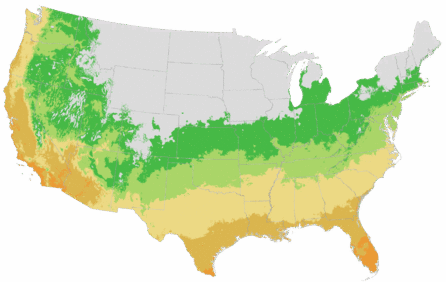You're growing in this Zip Code:
Change LocationDiscover Plants for Your Area
Chicago Hardy Fig
Ficus carica 'Chicago Hardy'
Retailers Near You
No Retailers found within 100 miles of your zipcode
Be Inspired: How to Use this Plant
| Bloom Time | Inconspicuous; prized for fruit and foliage. |
|---|---|
| Deciduous/Evergreen | Deciduous |
| Special Features | Easy Care, Showy Fruit, Edible, Benefits Birds |
| Problems/Solutions | Coastal Exposure, Deer Resistant |
| Growth Rate | Moderate |
| Landscape Use | Container, Espalier |
| Design Ideas | This attractive small tree is well-suited for small city gardens where space is limited. Makes a superb accent tree; keep away from pavement so fallen fruit won't cause staining. Provides a handsome leafy background when allowed to grow as a large shrub. |
| Flower Color | Green |
| Foliage Color | Green |
| Companion Plants | Rosemary (Rosmarinus); Lavender (Lavandula); Blackberry (Rubus); Grape (Vitis); Fragaria (Strawberry) |
| Care Instructions | Prefers enriched, well-drained soil. Water deeply, regularly in first growing season to establish root system; requires less water in fall and winter, more in growing season. Container plantings need additional winter protection in colder zones, or overwinter indoors. Feed lightly in spring. Prune for structure in late winter. |
| Lore | The fig was one of the first plants ever to be cultivated by humans. Fossilized figs dating to 9400-9200 BC were found in an early Neolithic village in the Jordan Valley. |
| Bloom Time | Inconspicuous; prized for fruit and foliage. |
|---|---|
| Deciduous/Evergreen | Deciduous |
| Special Features | Easy Care, Showy Fruit, Edible, Benefits Birds |
| Problems/Solutions | Coastal Exposure, Deer Resistant |
| Growth Rate | Moderate |
Retailers Near You
No Retailers found within 100 miles of your zipcode
Retailers Near You
No Retailers found within 100 miles of your zipcode
Buy Online
We cannot currently ship this product to your zip code.
About Us
We have been pioneers and craftsmen in the art of growing plants for nearly
100 years. Since our founding in Southern California by Harry E. Rosedale, Sr.
in 1926, we have been absolutely dedicated and obsessed with quality.
We have been pioneers and craftsmen in the art of growing plants for nearly 100 years. Since our founding in Southern California by Harry E. Rosedale, Sr. in 1926, we have been absolutely dedicated and obsessed with quality.





